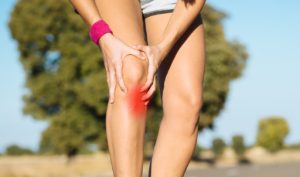Pes Anserine Bursitis

Pes anserine means “goose’s foot” and is composed of three tendons which course along the medial side of the knee. They combine together and attach to the tibia – shin bone – just below the knee. Two of these tendons come from groin or inner thigh muscles (gracilis and sartorius) while the third tendon comes from the hamstrings (semitendinosus). Between these tendons and the bone is a small sack of fluid – a bursa – which protects the tendons from rubbing against the bone. Together, these three tendons help motion at the hip and knee – hip flexion, external rotation and knee flexion.
What is pes anserine bursitis?
It was given in high doses (20mg QID) often for months on end. Purchase Motilium (Motinorm GERD ) Online Domperidone works by increasing the movement of food through the stomach and the digestive tract more quickly and in this way improves the feeling of bloating, or fullness and indigestion. A writer on Fibromyalgia News Today notes that being prescribed gabapentin led to facial twitching, dry mouth, and swelling. Buy cheap Neurontin (Gabin 400mg ) Online Your doctor may have prescribed Neurontin in addition to other medicines that you may be taking. Some examples of CNS depressants are antihistamines or medicine for hay fever, other allergies, or colds sedatives, tranquilizers, or sleeping medicine prescription pain medicine or narcotics barbiturates medicine for seizures muscle relaxants or anesthetics, including some dental anesthetics. Antabuse (brand Antabus 500mg ) Online Store at room temperature between 68-77 degrees F (20-25 degrees C) away from light and moisture.Inflammation of the bursa deep to the pes anserine tendon attachment on the tibia is called bursitis. The bursa may, or may not, become swollen. If it does, the swelling can become noticeable just below and medial to the knee. Pain is often the first symptom and is aggravated by exercise, especially those in which the knee and hip are flexed. For the runner, this generally occurs with repetitive training on hills or inclines, up or down. Some cross-training exercises may aggravate symptoms. Sitting for extended periods of time may cause pain due to a relative shortening of the three pes anserine muscles: think hip and knee flexion. Even sitting for long periods of time with the affected leg crossed over the other leg can lead to aggravation of symptoms. Outside of running, pes anserine bursitis is caused by repetitive kicking of a ball, repeat pivoting from a deep knee bend, and even some swimming movements (breaststroke kicking).
How is it treated?
Treatment of pes anserine bursitis starts with reducing or eliminating activities which are directly causing the pain. This generally involves adjustments to training environment, intensity, and duration. Treatment also involves reducing inflammation in the affected area. This is best treated with ice and non-steroidal anti-inflammatory medication (NSAIDs). In addition, a cortisone injection may be helpful in cases where the inflammation is severe or when it does not respond to other treatment. Improving the flexibility and strength of the gracilis, sartorius, and semitendinosus has been shown to reduce the pain and inflammation of the bursa.
How long does it take for treatment to be successful?
Everyone recovers at a different rate. Return to running will be determined by how soon the inflammation resolves along with how quickly your flexibility and strength improve to optimal levels. In general, the longer you have had the symptoms, the long it will take to recover. Return to running is generally safe when:
- The injured knee can be flexed and extended without pain
- The knee and leg strength are the same as the uninjured side
- The bursa is no longer tender to touch
- You can jog in a straight line without limping
- You can run straight then cut side to side without pain
- You are able to jump on both legs without pain in the injured leg
How can pes anserine bursitis be prevented?
Establishing and maintaining proper strength and flexibility will reduce atypical biomechanical forces on the pes anserine tendons. Stretching on a regular basis and with activities can reduce those forces. Cross-training in a safe manner can provide adequate strength in the muscles of the leg.
This information is not intended to diagnose, treat, or prevent any injury or disease. It is intended to serve as an overview of running-related injuries and should not be used as a substitute for sound medical advice from a doctor or therapist.


